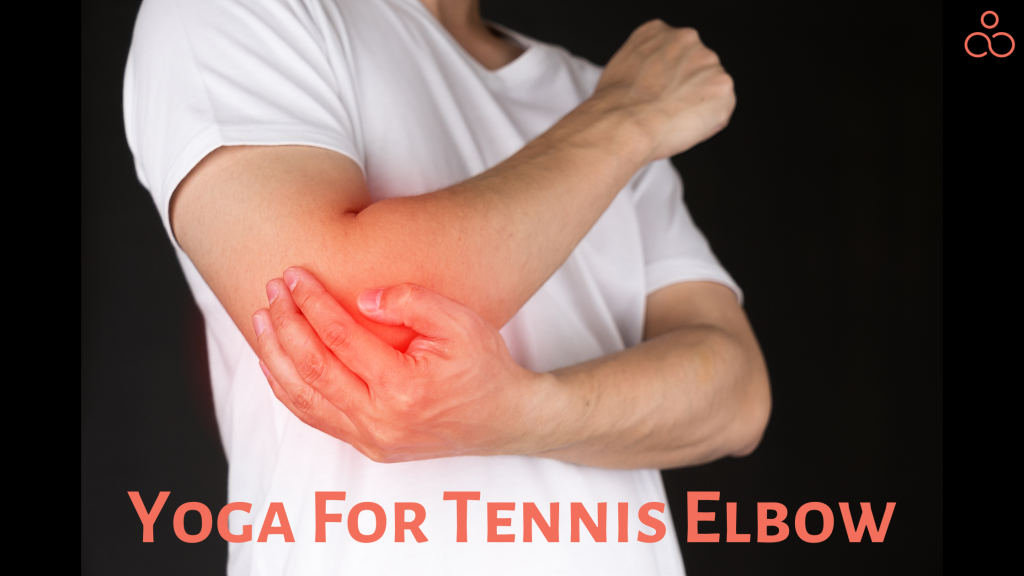Tennis elbow can limit an individual’s range of motion and cause discomfort and agony while moving the afflicted arm. Yoga for tennis elbow might sound risky and practically undoable but we would like to clarify in detail that yogic poses could help a great deal with this condition. The information in this article should make it easier for those with tennis elbows to practice and take pleasure in yoga.
What is Tennis Elbow?
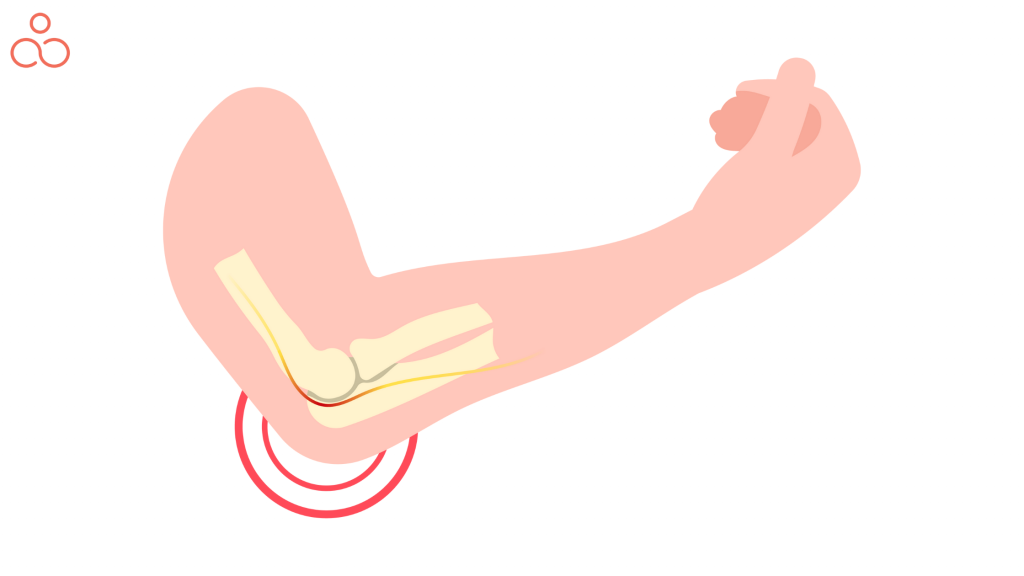
Tennis elbow is referred to in medicine as lateral epicondylitis. It affects the muscles on the outside of your forearm that stretch your fingers, wrist, and elbow as well as the tendons that attach to the lateral epicondyle, the outside of the elbow (the carpi radialis brevis and longus, extensor digitorum communis, and extensor carpi ulnaris). (Similarly, the medial epicondyle on the inside of the elbow is affected by the less frequent ailment known as golfer’s elbow or thrower’s elbow.
Tendonitis or tendonosis may be referred to as “tennis elbow”: Small rips in the extensor tendons of the wrist, elbow, and finger develop when there is tendonitis. Even when there is no present aggravation, the elbow extensor tendons deteriorate in the case of tendonosis following repetitive inflammation. Tendonosis is a “recalcitrant,” or chronic, injury that may last months, as opposed to tendonitis, which is an acute injury that lasts days or weeks. It sometimes may even seem like the body tissues have forgotten how to recover.
According to the findings of a recent demographic survey, there are almost one million new instances of tennis elbow in the US every year. Ages 40 to 60 are the most vulnerable to developing tennis elbow, according to the same study (with women experiencing a slightly higher incidence than men).
Repeated motions like the tennis serve, forehand and backhand are often the cause and aggravation of the tennis elbow. If your racket is overly stiff, or heavy, or the strings are too tight, these strokes are very hazardous. Tennis elbow can also be caused by poor technique, such as “leading” with your elbow, playing a backhand stroke with your wrist contracted as opposed to outstretched, or not releasing your grip quickly enough when the racquet strikes the ball.
What exactly is elbow tendonitis?
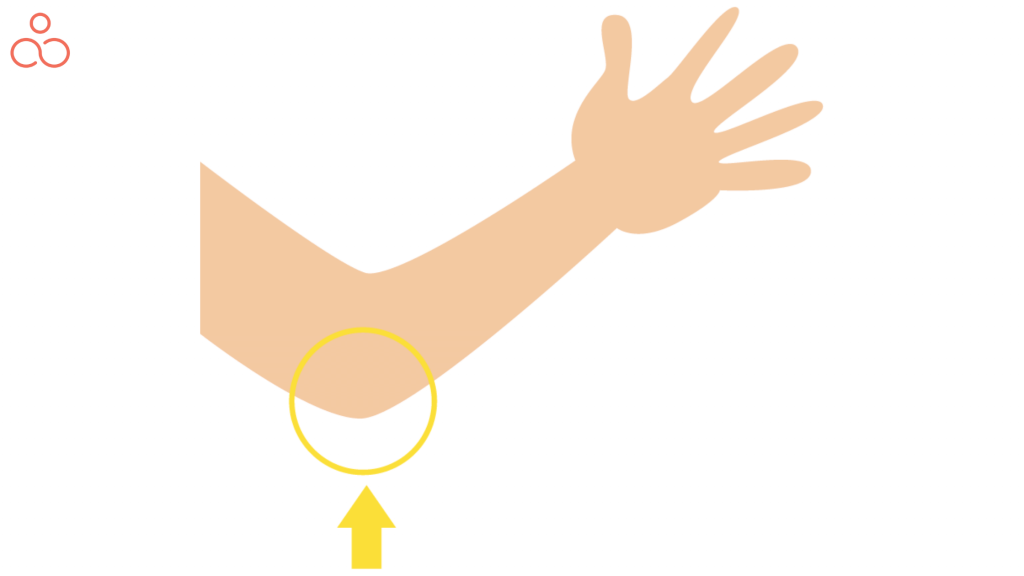
The forearm muscles that are used to straighten and elevate hands and wrists are repeatedly contracted, which causes a series of small rips in the tendons that connect them to the outside of your elbow. The tissues enlarge, and the tendons in the wrist and forearms hurt.
Anyone can get tennis elbow for a variety of reasons. When we perform planks or chaturangas, cook or clean around the house, or utilize our always-present electronic devices daily, we may put a strain on our joints. Please make sure to first relax and cool your injury if you are feeling discomfort near your elbow joint. Although there is no alternative for sleep, alternative treatments like acupuncturists and anti-inflammatory diets may help you on your path to pain relief.
What are the symptoms of tennis elbow?
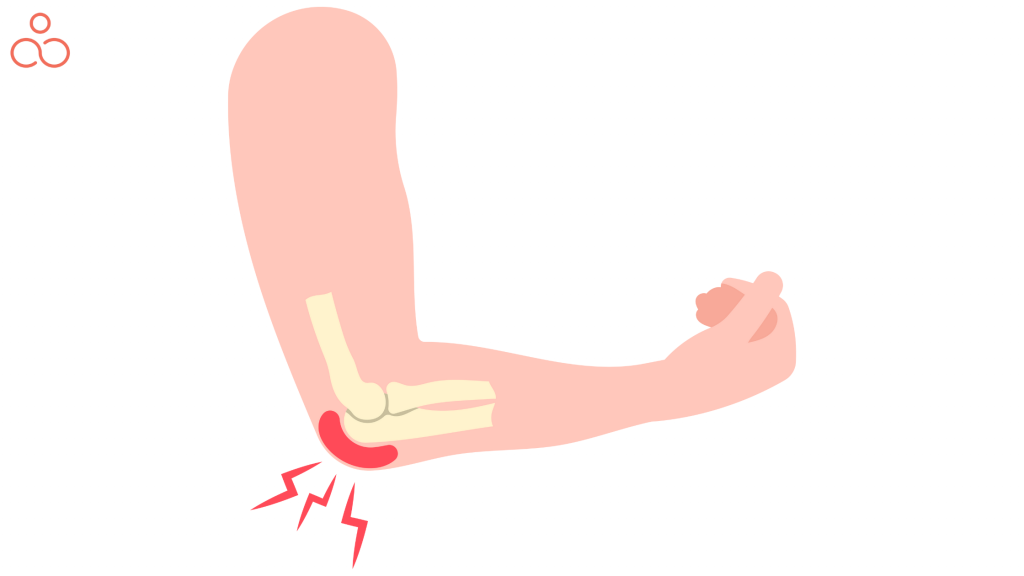
Tennis elbow discomfort may go down your lower arm and into your wrist from the exterior of your shoulder. Being in pain or weakness may make it difficult to:
- Shake hands or hold something
- Change the door handle
- Hold up a coffee mug
When to seek a specialist’s advice?
If self-care measures like rest, ice, and the use of non-drug pain medications don’t lessen your elbow discomfort and sensitivity, talk to your specialist doctor. Tennis elbow is a result of overuse and muscular tension.
The muscles in your lower arm that you use to fix and elevate your hand and wrist repeatedly contract, which is why the ligaments connecting the lower arm muscles to the hard bony protrusion on the outside of your elbow may gradually rip apart due to repeated motions and tissue stress. As suggested by the name, one potential cause of tennis shoulder is playing tennis, particularly the constant use of the hitting stroke with inadequate strategy. In any case, a wide range of other common motions, such as:
- Using equipment connected to plumbing
- Driving
- Painting
- Chopping up ingredients for food preparation, particularly meat
- Usage of the mouse button repeatedly etc.
All such regular activities could also result in tennis elbow!
How yoga may treat tennis elbow?
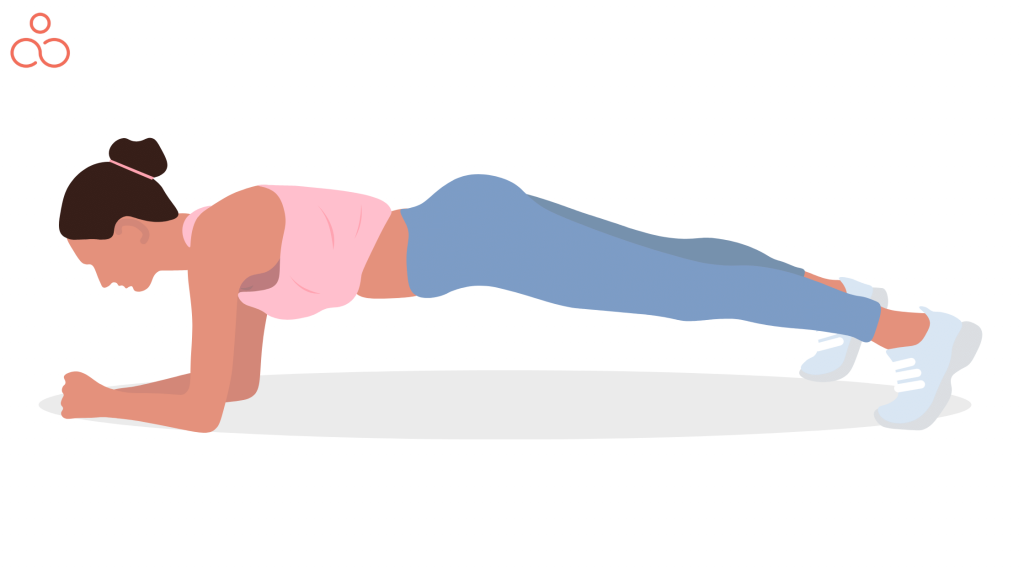
Yoga is a mind-body practice that includes breath control, meditation, and physical postures that lengthen and strengthen muscles in a variety of ways. Strength, flexibility, anfd balance are all factors that yoga for tennis elbow may help with. These advantages also include:
- Enhancing mobility
- Encouraging relaxation
- Strengthening, sturdiness, flexibility, and balance
- Stress management
- Better posture
- Keeping the spine safe
Yoga is a mind-body treatment that is frequently a fantastic technique to assist manage tennis elbow discomfort as well as the tension that comes with it.
You may be more susceptible to tennis shoulder if you have the following factors:
- Age: Even though tennis elbow affects many people of all ages, it typically affects people between the ages of 30 and 50.
- Lifestyle: Plumbers, carpenters, artists, butchers, and cooks are just a few examples of people who are more likely to develop tennis elbow if their jobs require repetitive wrist and arm motions.
- Sports: Tennis elbow is more likely to affect those who are often involved in sports, especially when using subpar stroke technique.
Yoga with tennis elbow: Is it possible?
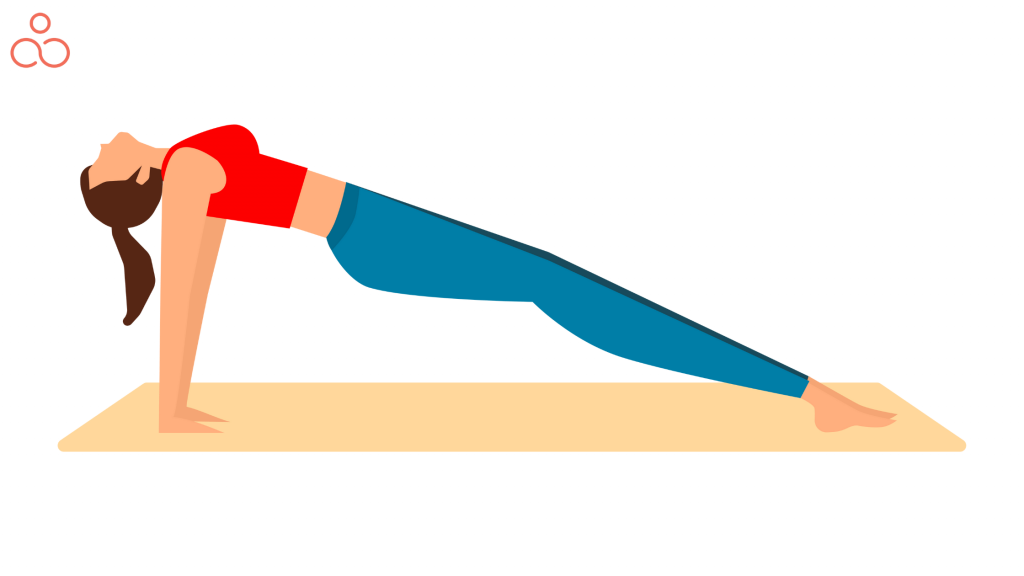
Tennis elbow is completely OK for yoga practice as long as you can maintain a position without putting any strain on your arm joints. By shifting the pressure being applied to your tendons and joints to other comparable body parts, you can avoid excessive hyperextension of the arm.
For instance, as you begin the downward-facing dog posture, press your hands equally into the mat’s four corners and grasp it firmly with your fingers (with almost zero pressure on your hands). Tennis elbow can be cured as the muscles around the joint are also strengthened.
Tennis elbow is frequently caused by overuse, repeated motion, or an actual injury. Pain and inflammation are common symptoms. Yoga is almost perfect for helping patients recover from this disease since any posture that isn’t a weight-bearing arm pose may be done.
Make sure your elbow creases don’t face forward and hyperextend if you’re in a yoga posture that requires weight on the arms, like Table Pose. The ligaments may be overstretched as a result of hyperextending, which makes the joints less stable and increases the risk of injury.
Yoga poses to treat tennis elbow
Cow Face Pose or Gomukhasana
- Place your legs out in front of you as you sit down on the ground. Your arms should be at your sides. Your feet should be level on the ground with your knees bent.
- Move your left foot toward your right hip by placing it beneath your right knee. Raise your right foot to the outside of your left hip while placing your right knee on your left knee. Make sure your weight is distributed evenly.
- Your left hand should be extended, bent at the elbow, and moved in the direction of your spine. From the top side, bring your left hand to the vertebrae until the palm of your right hand is positioned in the middle of the spine. Try to contact both hands’ fingers while holding on.
- Hold the position while feeling the strain in your elbows and arms. Continue to breathe slowly. Uncross your legs as you slowly release the posture while breathing. Repeat a few times, then go back to the beginning position.
Your wrists and elbows will benefit from this specific yoga stance, which will also aid to boost the oxygen flow to the elbow region. All of these will help to repair the disease as well as tighten and extend the muscles surrounding your elbow.
Extended Triangle Pose or Utthita Trikonasana
- Stand straight with your arms at your sides and feet at hip-width apart. Place your feet approximately 4 to 5 feet apart while taking deep, gentle breaths. Raise your left foot gently inward while extending your right foot outward.
- Stretch outwards while raising your arms to shoulder height from your sides. Your fingertips should be on the ground immediately behind the right ankle as you lower the right hand toward it. Stretch out your left arm as wide as you can by raising it.
- Hold the position for one minute while tilting your head toward your left arm.
- Gently take a step back into your starting position, then switch sides to continue. Be careful to stretch far enough to feel the elbow being pulled.
Your wrists and elbows will benefit from this specific yoga pose’s gentle pain relief and stretching of the joints.
Half Cobra Pose or Ardha Bhujangasana
- Lie on your stomach on the floor with your legs and feet placed close together. Put your arms at your sides, palms towards the ground. Start exhaling lightly and start elevating your upper body.
- While doing this, be careful to maintain your arms up at the elbow. For a few minutes, maintain the posture while slowly breathing.
- Return to your starting position gradually and take a short break. Repeat once more.
- Tennis elbow can be cured with regular yoga practice, which also extends the ligaments and tendons and keeps them supple. It significantly lowers everyone’s chance of developing a tennis elbow.
Don’t quit the workouts once you start to feel pain-free! You will only get stronger if you can gradually and safely increase your arm’s strength!
Warrior II or Virabhadrasana II
You may completely extend your arms with Warrior II without experiencing pain or exacerbation of the tennis elbow. The posture is performed in the following order:
- Standing in Tadasana (Mountain Pose).
- Step or hop with your feet three to four feet apart as you exhale.
- Keep your shoulder blades apart and your palms down as you raise your arms out to the sides parallel to the floor.
- Turn the left foot 90 ° to the left and your right foot just a little to the right.
- Align the center of your left kneecap with the center of your left ankle by lining up the left heels with the right heel, tense your thighs, and move your left thigh outward.
- After exhaling, bend your left knee over your left ankle while maintaining a perpendicular shin to the ground.
- Straighten the right leg, press the outside of the right heel into the floor, and bring the left thigh parallel to the floor.
- Stretch your arms away from your shoulder blades while keeping them parallel to the floor. Do not, however, sag your body over your left thigh.
- Turn your head to the left, press your tailbone slightly toward your pubis, and look out over your fingers.
- Hold for 30 to 60 seconds, exhale to release the posture, turn the feet around, and repeat on the opposite side.
Revolved Chair Pose or Parivrtta Utkatasana
Your back, chest, thighs, and glutes will all benefit from Revolved Chair Pose, which will also stretch your hips.
- Start in Tadasana with your sternum up and your arms by your sides.
- Squeeze your inner thighs together as you squat down deeply while shifting your weight back to your heels.
- Put your hands together and extend your arms upwards.
- Inhale and lower your arms in the Prayer Pose to the center of your chest while keeping your palms firmly clasped.
- Turn your torso to the right as you exhale. As a result, your right knee will be outside of your left elbow. Maintain the prayer pose with your arms.
- Deepen the twist as you inhale and then exhale.
- As you raise your gaze, stay in the position for three to five breaths.
- As you exhale, slowly turn your lower body to look forward.
- Return to Tadasana by erecting your legs and bringing your hands back to the prayer position. On the opposite side, repeat.
- Regular yoga practice not only aids in the recovery of the tennis elbow but also extends and maintains the flexibility of the tendons and ligaments, greatly lowering the chance of developing the tennis elbow in the first place.
Who is at risk of developing tennis elbow?
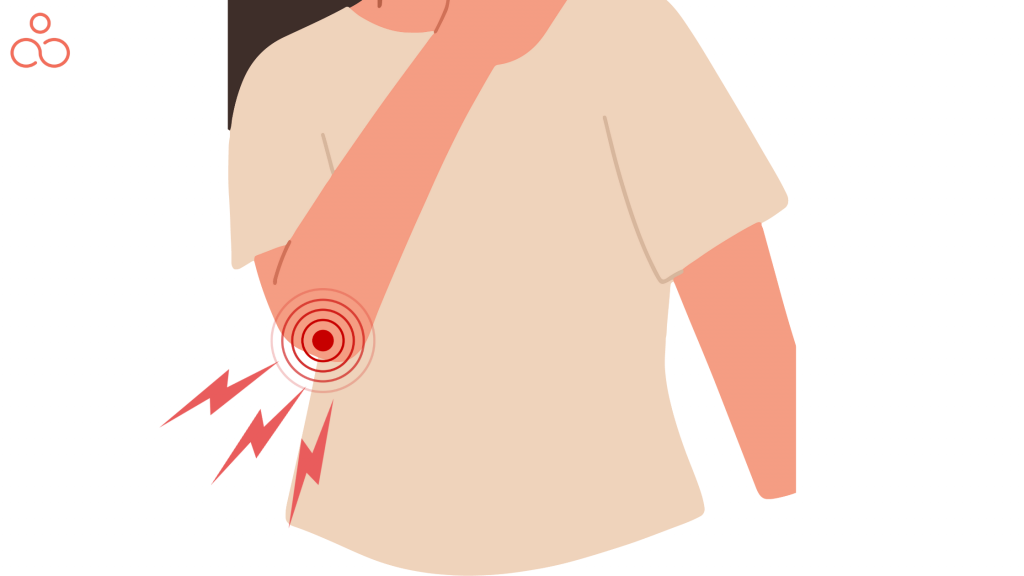
Since your wrist extensions and arm rotations are controlled by the bruised tendon, activities that overuse these movements put you at risk for Tennis elbow.
Ironically, golfers experience tennis elbow more than genuine tennis players do. Therefore, it follows that having a Tennis elbow is a condition that can affect anyone. Any sportsperson, athlete, artist, or performer who engages in physically demanding work might develop a tennis elbow. Tennis elbow can be brought on by occupations requiring a lot of hard lifting or even typing.
What are the best practices that can help you keep tennis elbow at bay?
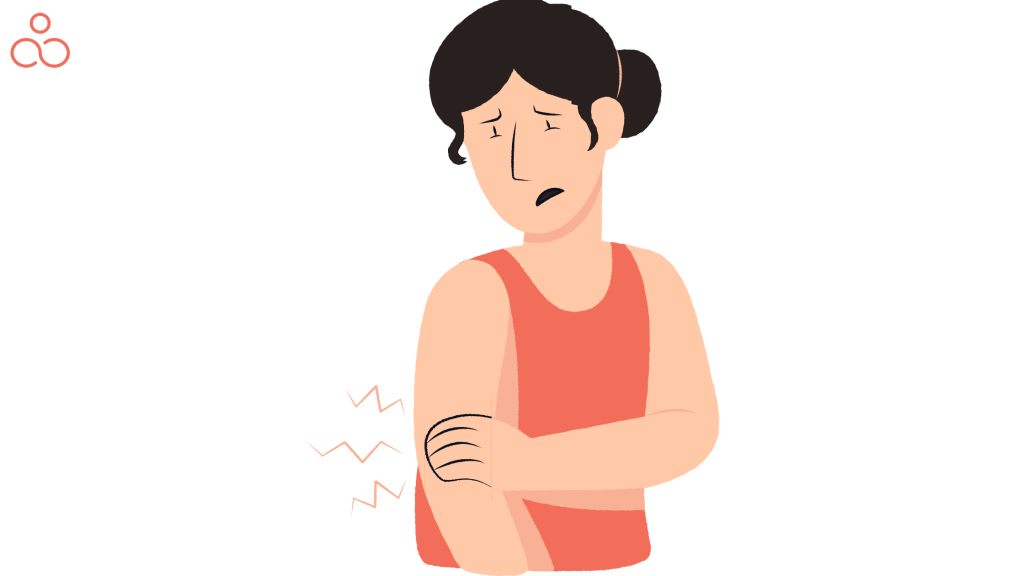
- Carry equal weights on both hands. And if carrying a heavyweight (which isn’t suggested) in a single hand, switch hands repeatedly.
- Remember to sleep in proper posture.
- If you have a desk job, adjust your sitting height such that your forearms are parallel to the floor. Also, keep your wrists straight.
- If you’re involved in other physical activities involving your hand, use armbands, and elbow and wrist grips.
- Do not ignore small bruises, tend to them with cooling pads, free hands stretch, and rotational movements.
- If you have a labor-intensive profession, time your tasks with even periods of rest.
- When carrying a heavy load avoid overextension and rotation of joints. Instead, try to manage the weight smartly through the entire body rather than depending entirely on your hands.
- Carry similar loads with both hands. And alternate hands often if you’re carrying a large object with one hand (which isn’t advised).
- Keep in mind to sleep with good posture.
- If you work at a desk, raise your chair so that your forearms are parallel to the ground. Keep your wrists straight as well.
- Use armbands, elbow and wrist grips, and armbands if you’re engaged in other hand-intensive physical activities.
- Do not ignore minor bruises; treat them with ice packs, stretching the hands-free, and rotating motions.
- If your job requires a lot of work, schedule regular breaks between tasks.
- Avoid rotating your joints and overextending them when lifting big loads. And use your full body to control the weight of the load rather than relying just on your hands to accomplish it.
What are the exercises to avoid if you have a tennis elbow?
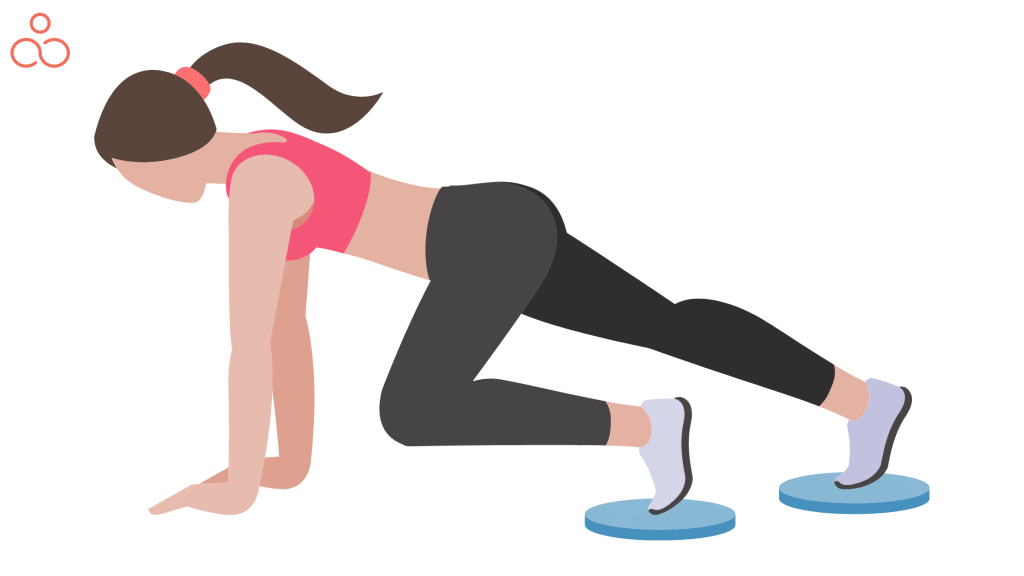
By now, you must be aware that not all arm workouts are beneficial for your condition. The angle and degree of the stretch are equally important. Push-ups are bad for you if you have Tennis elbow, while planks are healthy for you, bench presses and chin-ups are another cause for concern. All weightlifting activities, such as barbell extensions and dumbbell curls, are not recommended. And finally, dangerous movements like handstands and supporting your weight with your hands should be avoided.
FAQs
Is yoga a treatment for tennis elbow?
Our research indicates that several yoga styles might benefit tennis elbow. Yoga is beneficial for treating tennis elbow, and many positions do not require weight-bearing that requires the use of both arms.
How can I build up my elbow muscles?
The arm muscles that support the elbow can be strengthened by performing this stance. This position is a well-liked exercise technique since it is basic and straightforward to perform. Keep your hands and knees on the floor in front of you while remaining seated. Leaning forward will enable the hands, arms, and shoulders to support the body.
How are planks performed for tennis elbow?
The plank stance slightly contracts the muscular tendons associated with the tennis elbow. They are used excessively but only somewhat through this delicate engagement. Just below your shoulders, keep your wrists. Keep your knees below your hips and your legs close together. Raise your buttocks while raising your knees off the ground.
Conclusion
Yoga poses are effective in treating extensive physiological problems like tennis elbow. One may argue that yoga was created to treat and prevent severe bodily injuries in ancient times when there were a lot of physical activities to complete. When practicing yoga for tennis elbow, never attempt to go beyond your physical limitations. Try yoga with armbands or elbow pads to support your waist, elbows, or palms if your posture is off or you experience shoulder or back pain.

